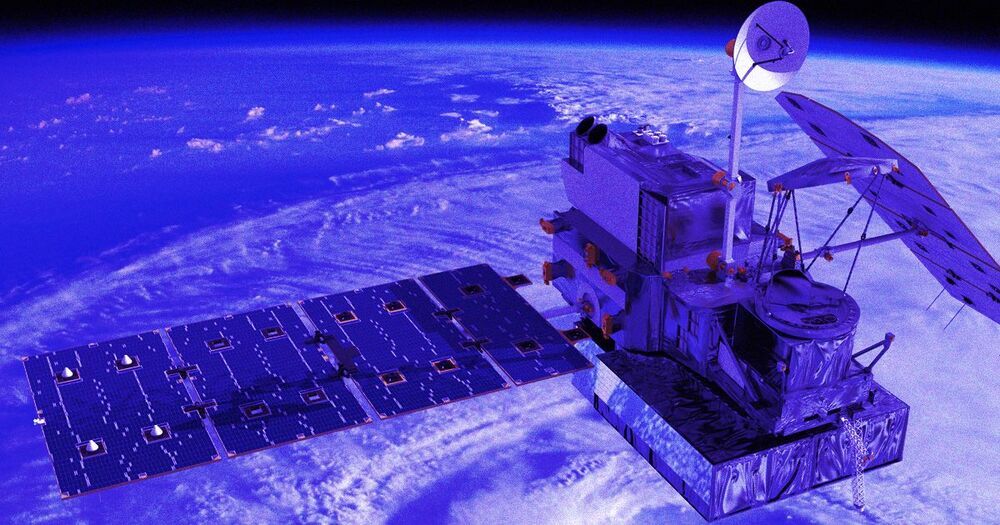A spyware in a 6-year-old Ferocious Kitten covert surveillance campaign now targets Telegram and Psiphon VPN users in Iran.



It is called the “city brain”, an artificial intelligence system that is now being used across China – only megacities could afford them before – for everything from pandemic contact tracing to monitoring illegal public assemblies and river pollution.
Authorities at all levels are now using AI for everything from pandemic control to monitoring illegal public assemblies.

An Important Free Offer From Freedom Forum News to Attend an Online Event; Greenwald vs. Dershowitz Exploring Government Surveillance on May 29th, 2021at 9pm EST. Sign Up Now!
Join political heavyweights Glenn Greenwald and Alan Dershowitz as they go head to head to address this question for the ages in a live video debate exclusively for Freedom Forum News and Arium at 9pm ET on May 29th.
Freedom Forum News has partnered with Ariuum, the first free speech video debate platform where you can create your own channel to share your ideas and opinions live with other Ariuum Citizens, while voting for the topics that you believe in.
If you sign-up before midnight tonight you will receive access to watch the Greenwald-Dershowitz debate live and for free!

A new way to harvest power from 5G networks could make many of the batteries that power our devices a thing of the past, researchers say.
An ATHENA group member holds an inkjet-printed prototype of a mm-wave harvester. The researchers envision a future where IoT devices will be powered wirelessly over 5G networks. (Credit: Christopher Moore/Georgia Tech)
The researchers have developed a flexible Rotman lens-based rectifying antenna (rectenna) system capable, for the first time, of millimeter-wave harvesting in the 28-GHz band. The Rotman lens is key for beamforming networks and is frequently used in radar surveillance systems to see targets in multiple directions without physically moving the antenna system.

While a Mars rover can explore where no person has gone before, a smaller robot at the University of the Sunshine Coast in Australia could climb to new heights by mimicking the movements of a lizard.
Simply named X-4, the university’s climbing robot has allowed a team of researchers to test and replicate how a lizard moves in the hope that their findings will inspire next-generation robotics design for disaster relief, remote surveillance and possibly even space exploration.
In a scientific paper published today in Proceedings of the Royal Society B, the team states that lizards have optimized their movement across difficult terrain over many years of evolution.

Researchers at the Georgia Institute of Technology have uncovered an innovative way to tap into the over-capacity of 5G networks, turning them into “a wireless power grid” for powering Internet of Things (IoT) devices that today need batteries to operate.
The Georgia Tech inventors have developed a flexible Rotman lens-based rectifying antenna (rectenna) system capable, for the first time, of millimeter-wave harvesting in the 28-GHz band. (The Rotman lens is key for beamforming networks and is frequently used in radar surveillance systems to see targets in multiple directions without physically moving the antenna system.)
But to harvest enough power to supply low-power devices at long ranges, large aperture antennas are required. The problem with large antennas is they have a narrowing field of view. This limitation prevents their operation if the antenna is widely dispersed from a 5G base station.

Japan’s space agency wants to keep the satellite’s cameras out of military hands.
An unusual geopolitical situation is brewing aboard the International Space Station. Prior to the military coup in Myanmar earlier this year, Japan’s space agency JAXA had been collaborating with the country to build microsatellites that it planned to deploy in partnership with Myanmar’s government.
Now, JAXA has no idea what to do with the pair of 50-kilogram satellites, according to SlashGear. And while Japanese scientists hope to bring the agriculture and fishery-monitoring satellites to life, they’re currently holding them on the ISS instead of deploying them out of fear they might be misused for military purposes — a striking example of real-world geopolitics spilling over into space.
After the military coup in Myanmar, Teppei Kasai, the Asia program director for the group Human Rights Watch noted that it would be relatively straightforward to use the satellites’ Earth-facing cameras for military or surveillance purposes, according to SlashGear.

A fireball that lit up the sky over the United Kingdom and Northern Europe on February 28 was an extremely rare type of meteorite. Fragments of the space rock discovered on a driveway in the Cotswolds could provide answers to questions about the early history of the solar system and life on Earth. Almost 300 grams (10.6 ounces) of the meteorite have been collected from the small Gloucestershire town of Winchcombe by scientists, who said the rock was formed of carbonaceous chondrite. The substance is some of the most primitive and pristine material in the solar system and has been known to contain organic material and amino acids — the ingredients for life.
The Natural History Museum in London said the fragments were retrieved in such good condition and so quickly after the meteorite’s fall that they are comparable to rock samples returned from space missions, both in quality and quantity. “I was in shock when I saw it and immediately knew it was a rare meteorite and a totally unique event. It’s emotional being the first one to confirm to the people standing in front of you that the thud they heard on their driveway overnight is in fact the real thing,” said Richard Greenwood, a research fellow in planetary sciences at The Open University, in a statement from the museum. He was the first scientist to identify the meteorite.
There are approximately 65000 known meteorites on Earth, the museum said. Only 1206 have been witnessed to fall, and of these, only 51 are carbonaceous chondrites. The fireball was seen by thousands of eyewitnesses across the UK and Northern Europe and was captured on home surveillance and other cameras when it fell to Earth at 9:54 p.m. GMT on February 28. The original space rock was traveling at nearly 14 kilometers per second before hitting the Earth’s atmosphere and ultimately landing on a driveway in Winchcombe. Other pieces of the meteorite have been recovered in the local area. Footage of the fireball shot by members of the public and the UK Fireball Alliance camera networks helped locate the meteorite and determine exactly where it came from in the solar system, the museum said.

Advocates contend central bank digital currencies can make cross-border transactions easier, promote financial inclusion and provide payment system stability. There are also privacy and surveillance risks with government-issued digital currencies. And in times of economic uncertainty, people may be more likely to pull their funds from commercial banks, accelerating a bank run.
Intense interest in cryptocurrencies and the Covid-19 pandemic have sparked debate among central banks on whether they should issue digital currencies of their own.
China has been in the lead in developing its own digital currency. It’s been working on the initiative since 2014. Chinese central bank officials have already conducted massive trials in major cities including Shenzhen, Chengdu and Hangzhou.
“China’s experiment is very large scale,” said J. Christopher Giancarlo, former chairman of the U.S. Commodity Futures Trading Commission. “When the world arrives in Beijing next winter for the Winter Olympics, they are going to be using the new digital renminbi to shop and to stay in hotels and to buy meals in restaurants. The world is going to see a functioning [central bank digital currency] very soon, within the coming year.”

Things are getting pretty heated in the South China Sea.
The United States and China are engaged in the first military back-and-forth of the new year, sending many ships and aircraft into the South China Sea over the past few days.
This latest round kicked off with the return of an American carrier battle group to the region, followed by an unprecedented flight of eight Chinese bombers into nearby Taiwan’s air defense identification zone (ADIZ). Both sides piled on more fighters, surveillance aircraft, and bombers, making this dance-off a considerable escalation over previous years.